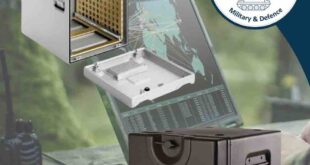Simone Bruckner discusses how braking resistors have helped revolutionise the railway industry both on and alongside the track
The opening of the Liverpool and Manchester Railway in 1830 marked the dawn of steam-powered rail travel.
The 31 mile railroad was the first to carry passengers and freight by means of steam-powered locomotives, spurring the development of England’s Industrial Revolution.
From diesel to electric locomotives, the industry has seen numerous advancements since then.
When diesel locomotives were replacing steam engines, dynamic braking was implemented to make rail operations more efficient.
In addition to safety, as fuel costs and environmental impacts assume greater importance, so does the need for options to reduce emissions.
Initially, dynamic braking was a tool for mountainous territory, where freight-cars were prone to overheating on long downgrades.
Diesel locomotives for trains operating in level territory, relatively light passenger trains, and slow-moving yard engines did not have dynamic braking.
However, larger railroads like the those of Pennsylvania and Santa Fe began to request dynamic braking for diesel locomotives to combat overheating.
As diesel development progressed, railroads began purchasing dynamic braking units in greater numbers. This provided greater operational flexibility by allowing power to roam the system wherever it was needed, instead of being restricted to a particular region.
Regenerative and rheostatic
Dynamic braking uses an electric motor as a generator to dissipate energy and is more precisely described by two terms – regenerative and rheostatic braking. The difference between these types of dynamic braking is the outcome of the electricity after it has been produced.
In regenerative braking, electricity is either immediately reused by other locomotives, or stored for later use. This electricity can be transmitted through overhead wires or, in the case of electric locomotives, an electrified third rail.
Alternatively, it can be stored onboard using a flywheel, battery or other energy storage system.
Rheostatic braking occurs when this energy is run through resistors and dissipated as heat.
While regenerative braking improves efficiency by reusing energy, its required infrastructure isn’t always available, as diesel-electric locomotives run primarily on track that has not been electrified.
Making the metro efficient
Although rail and tram are among the most efficient means of public transport, they consume a lot of energy – especially during acceleration.
The amount of energy required to accelerate a vehicle weighing hundreds of tons is huge, so any increase in efficiency will have significant benefits.
The majority of underground trains employ regenerative braking systems to feed power generated by the traction motors back into the line when coming to a halt at stations.
On intensively used networks, such as the London Underground, the braking power from the stopping trains is consumed and recycled by the other trains on the track.
Balancing the power needed for acceleration with stopping power makes metro systems one of the most energy-efficient forms of urban mass transportation.
However, when there are no other trains on the track or the distances between trains is too great, it may not be possible to use all the regenerated power.
In these cases, the energy is dissipated in brake resistors, mounted either on the trains themselves or at fixed locations alongside the track.
Resistors such as Cressall’s expanded mesh resistors are particularly suitable for this application, as they are convection cooled, with no moving or wearing parts and capable of dissipating very high powers in a compact space.
Resistor replacement
For reasons of speed, simplicity and cost, it is usually more economical to replace old resistors rather than entire drive systems. Resistor providers should hold extensive records of the components supplied for all types of locomotives.
In cases where original equipment designs are unavailable, it’s also useful for manufacturers to design functionally equivalent replacements. These should be re-tested to meet the same type-test criteria for electrical, thermal and vibration performance as the original equipment designs.
Beyond the obvious need to match resistance values, it’s important that the active mass, type of material used and the electrical creepages and clearances are all appropriate.
The industry has come a long way since the Liverpool and Manchester Railway, just as dynamic braking is no longer limited to mountainous journeys.
As well as considering alternative resistor options, railway engineers should also consider how they go about implementing them — as replacement resistors can often be the most effective way to revolutionise.
Image caption: Dynamic braking provides greater flexibility by allowing power to roam the system wherever it’s needed
Simone Bruckner, managing director of power resistor manufacturer Cressall Resistors.
 Engineer News Network The ultimate online news and information resource for today’s engineer
Engineer News Network The ultimate online news and information resource for today’s engineer





